

The first courtyardThe courtyard is flanked by covered colonnades. Those on the right (north) have statues of the pharaoh as Osiris in front of them. (See also the Ramesseum.) |
||

|
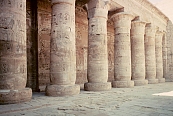
|
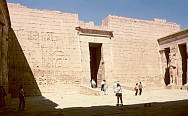
|
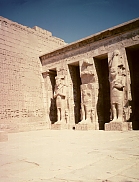
|
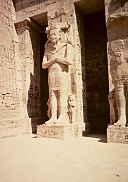
|
Details of the colossal statues of the pharaoh as Osiris |
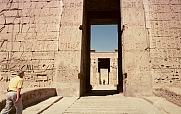
|
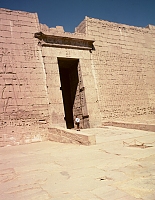
|
Back of the first courtyard with the second pylon |
The Second Courtyard (or the Courtyard of the Feasts)When this courtyard was converted to a Christian church the Osiris figures were removed; however, the reliefs were also covered with mud, thus preserving them for posterity. | ||
| A wide ramp leads to the portico; beyond that lies the hypostyle hall. | 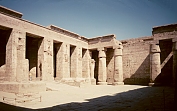
|
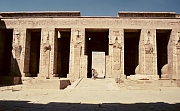
|
Reliefs depict military themes and religious festivalsTrophies of enemy hands and phalluses are presented to the pharaoh and counted by the scribes. |
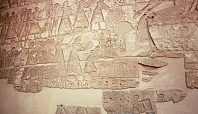
|

|
Left and center: the wide ramp with access to the portico; right: the architrave with a beautifully colored winged solar disk | ||

|
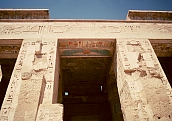
|
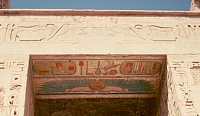
|
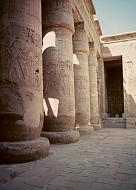
|

|
Relief engravings decorate the columns and square pillars. |
| The square pillars depict the pharaoh making offerings to various gods. | 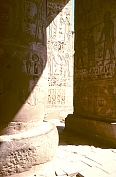
|
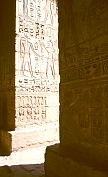
|
The Hypostyle HallThe roof in the hypostyle was originally supported by 24 columns with the eight forming the aisle being thicker. Today only the bases remain. The ceiling was raised over the central aisle, as it was in the Temple at Karnak and the Ramesseum.Left: looking east from the sanctuary; detail of the hypostyle hall | ||
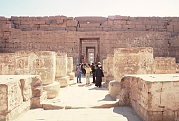 |
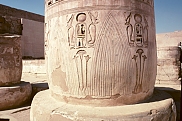
|
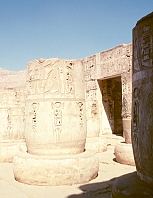
|
| Three smaller chambers were behind the hypostyle hall, at least two with treasuries. The third hypostyle hall had on either side of the central aisle statues of Ramses with Maat and with Thoth. | ||
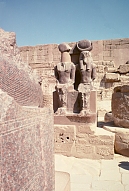
|
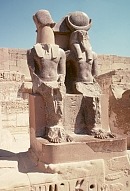
|
|
 Click here to go to the Egypt Index.
Click here to go to the Egypt Index.
 Click here to return to index of art historical sites.
Click here to return to index of art historical sites.
 Click here to return to index of artists and architects.
Click here to return to index of artists and architects.
 Click here to return to chronological index.
Click here to return to chronological index.
 Click here to see the home page of Bluffton College.
Click here to see the home page of Bluffton College.
